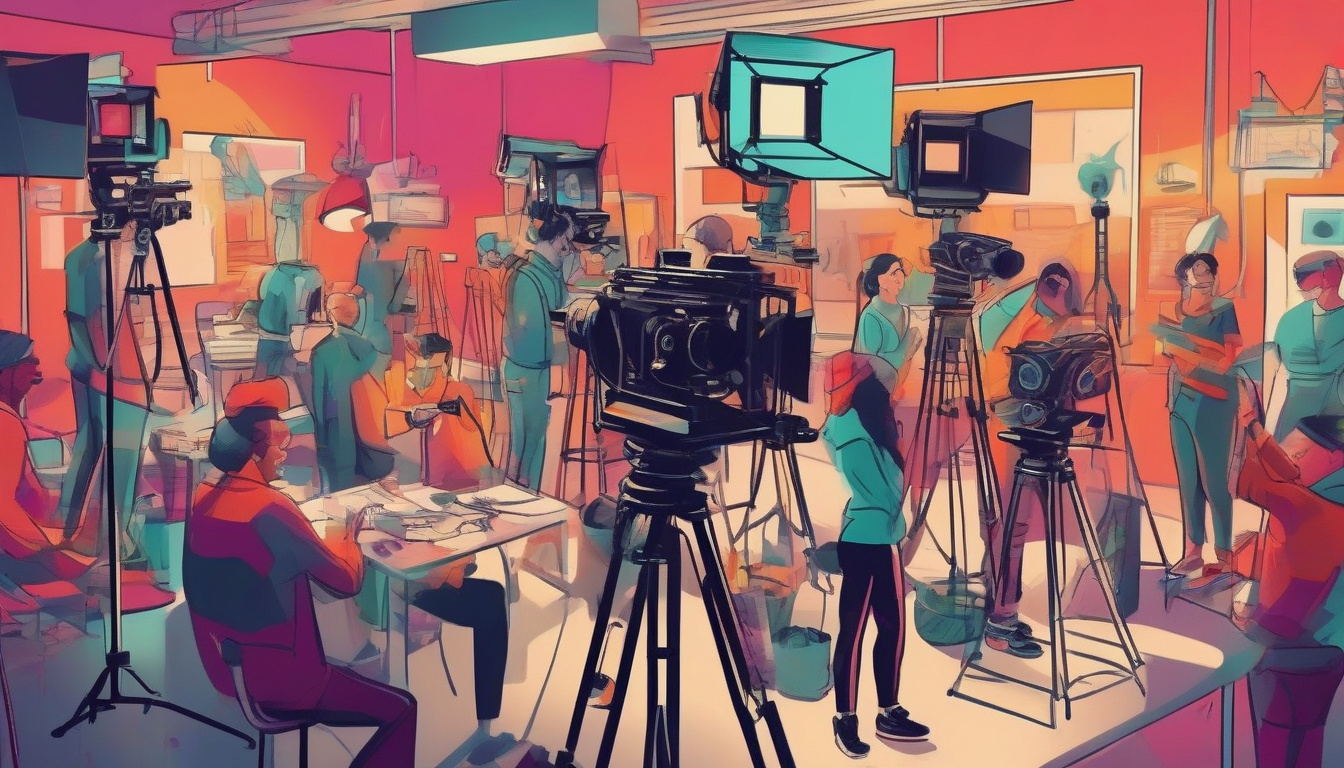
Romance: More Than Just I Love You
Hey there, starry-eyed scribe! Ready to dive into the whirlwind world of romance screenwriting? Get ready to spark some on-screen chemistry that even your least romantic friend can’t resist. Crafting a captivating romance screenplay isn’t just about throwing two attractive people in a room and hoping they hit it off. Oh no, it’s an art form, requiring a delicate blend of character, conflict, and charm. Fear not! Let’s break down this love potion together.
Step 1: Creating Characters Worth Rooting For
First things first, your lead characters need to be as complex and interesting as the plot of their love lives. Forget perfection; we want flaws! Realistic, lovable, maybe occasionally annoying flaws. These are the spice in the love soup, giving your audience something to relate to. Whether it’s a shy bookworm who collects teacups or a boisterous guitarist who can’t save money, make sure your characters have depth. After all, it’s their quirks, dreams, and fears that will tug the heartstrings of your viewers.
When Opposites Attract… or Do They?
Love isn’t as simple as matching puzzles pieces. Sometimes, it’s more like trying to jam together two pieces that don’t seem to fit, but with a bit of work (and drama!), they create a beautiful picture. Think about what draws your characters together despite their differences. Is it a shared secret, a common quest, or perhaps they both laugh at the same bad jokes? This tension between their differences and their connections is what will keep your audience guessing and engaged.
Step 2: Crafting a Compelling Conflict
Ah, conflict! The bread and butter of any storyline, but in romance, it’s what separates a swoon-worthy screenplay from a yawner. Your conflict should be a genuine obstacle to the relationship’s success. It could be an external force like feuding families (classic!), or internal like personal fears and past heartbreaks. Maybe one character is planning to move abroad for their dream job right as they are finally falling in love. Delicious, right?
To Love Triangle or Not to Love Triangle?
Love triangles are a popular trope in romance films, but be cautious. They can be as tricky as they are tantalizing. The key? Ensure that each point of your triangle is a fully developed character. Nobody likes a third wheel who’s just there as a plot device. Give them motives, give them charm, and who knows? The audience might even root for them!
Step 3: Setting the Scene-ery
Now, where does this blossoming love story unfold? The setting can play a pivotal role in your screenplay. It can influence the mood, tone, and even the plot of your story. A romance blooming in a cozy, snow-covered mountain lodge screams cuddle vibe, while a love story set in a bustling metropolis teems with possibilities and encounters. Choose a setting that amplifies your story and adds another layer of allure.
Nail That First Meet-Cute
The meet-cute is essential in romance films. It’s that memorable moment where your two leads first encounter each other. Make it unique, make it fun, but most importantly, make it impactful. It should set up the dynamic between your characters and give a peek into their chemistry. Whether it’s a mix-up at a coffee shop or a rivalry turned to romance at a dog park—make it memorable.
Step 4: Dialogue that Dazzles
What’s romance without some witty banter or heartfelt confessions? The dialogue in a romance screenplay is crucial. It can be flirtatious, fraught, or downright funny, but it should always feel authentic. Write conversations that your characters would realistically have, and let their words reveal their personalities and feelings. Remember, sometimes what’s unsaid can be just as powerful as what is spoken.
The End… Or Is It?
Finally, we come to the ending. Will your lovebirds overcome the odds stacked against them, or will they part ways, perhaps better for their journey but not bound by it? Whether you opt for a tear-jerking breakup or a joyful reunion at the airport, make sure your ending feels earned. All the emotional highs and lows should lead up to a satisfying conclusion that resonates with your audience and leaves them sighing wistfully as the credits roll.
So, grab that pen (or fire up that scriptwriting software!) and start crafting a romance screenplay that could make even Cupid jealous. Remember, at the heart of every great romantic film is a story that makes us believe in the magic of love, even if just for those ninety minutes. Happy writing!






